#Pesticide Testing
Text
Food Testing Lab In India

Sms Labs Services Private limited is a leading food testing laboratory in India, dedicated to ensuring the safety and quality of consumables. With cutting-edge technology and a team of experts, the lab conducts comprehensive testing, adhering to strict regulatory guidelines and international standards
sms labs prioritizes transparency and accessibility, providing timely and accurate information to clients. Additionally, it fosters innovation through research collaborations, driving advancements in food safety practices. As a trusted authority, Sms Labs plays a pivotal role in safeguarding public health and shaping the future of the Indian food industry
0 notes
Text
ik house is famously the medical malpractice show but i really thought it was like scrubs style where its technically not allowed but they do it anyway to save lives, this is straight up just half baked theories w absolutely NO testing, they just inject volatile treatments into patients left and right help
#you cant just find any old can of pesticide in a garage and say 'yeah this is the poison' and start administering an antidote#EXPERIMENTAL antidote at that. run some fucking tests brother??#we are 16 minutes into this episode youre gonna almost kill him at least 3 more times before you get it right
2 notes
·
View notes
Text
USAmericans
Read the Project 2025 manifesto RIGHT NOW
It's MUCH worse than y'all have been hearing
There is so much here you'll have to look at it for yourself, but the climate policy alone is nightmare fuel.
The republican coalition wants to essentially end funding for green energy, dramatically promote and expand fossil fuel industries, and eliminate funding and regulations in all sectors promoting climate change mitigation. Task forces and offices related to clean energy and lowering carbon emissions will be eliminated and replaced with offices for promoting fossil fuels.
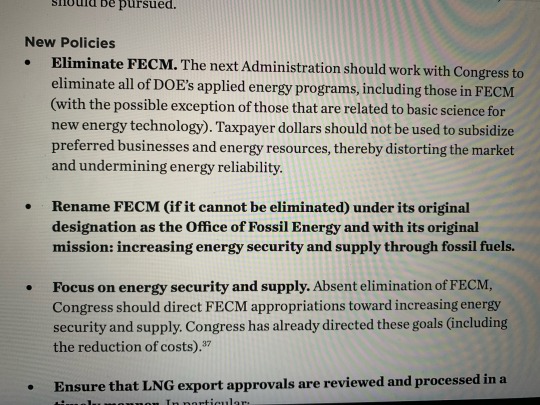
They want to LOG NATIONAL FORESTS TO "THIN" THE TREES TO STOP WILDFIRES.
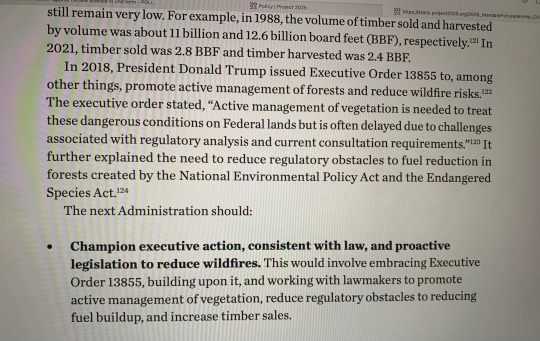
THEY WANT TO FORCE OREGON AND CALIFORNIA TO LOG THEIR NATIONAL FORESTS AND TREAT THEM AS FOR TIMBER PRODUCTION

There are specific provisions in Project 2025 to essentially destroy the Endangered Species Act, causing it to defer to the rights of "economic development" and "private property." The plan includes delisting gray wolves, cutting the budget so that a "triage" system is used to determine which species will get protection, removing funding for research, removing experts and specialists from the decision-making process, and preventing "experimental" populations of animals from being established.
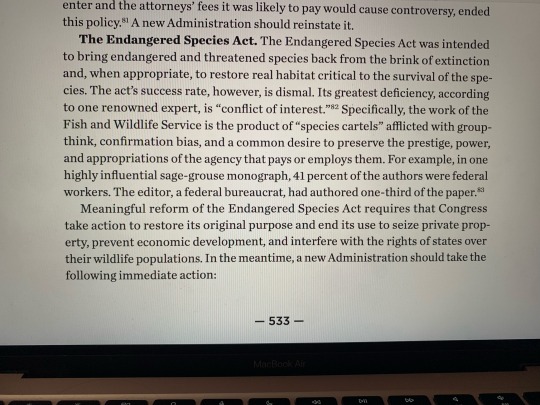


This is so much worse than I expected it to be and there's much more past that: They want to deregulate pesticides and remove much of the EPA's ability to regulate pollutants as well.
Also included in the manifesto is that we should
withdraw from nuclear weapons nonproliferation agreements, build more nuclear weapons, and resume nuclear weapons testing
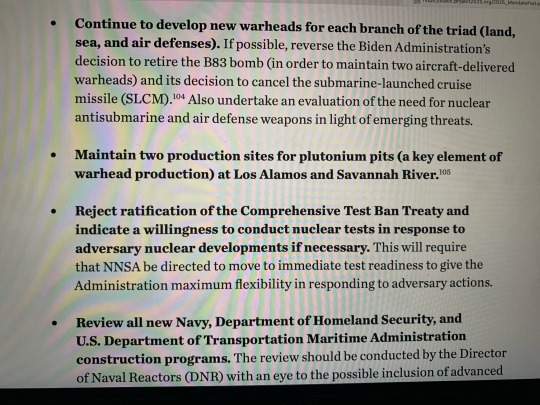
The manifesto comprehensively outlines the scorched-earth elimination of abortion access, down to ensuring doctors aren't even trained to perform abortions. There are plans in here to disrupt abortion access GLOBALLY, not just domestically.
Not only that,the Republicans plan on reframing family planning programs around "fertility awareness" and "holistic family planning."

I can't even describe it all. I'm trying to give screenshots of the most important things but there's so much.
The foreign policy is a nightmare. They plan to push fossil fuels onto the Global South and promote the development of fossil fuel industry in the "developing world."
It is aggressive and antagonistic towards other nations, strongly pro-military, proposing that we INCREASE (!!!!!) defense spending, improve public opinion of the military and military recruitment, and increase the power to fund new weapons technology.
Just read the Department of Defense section. It's about greatly increasing and strengthening the military-industrial complex, collaborating more closely with weapons manufacturers, removing regulatory barriers to arming our allies and to inventing new military weapons, and recruiting more people into the military. They include provisions to develop AI technology for surveillance. And of course, continuing to support Israel is in there.
Elsewhere it proposes interfering in foreign countries with creepy pro-USA propaganda campaigns, even establishing international educational programs where faculty have to pledge to promote USA interests.
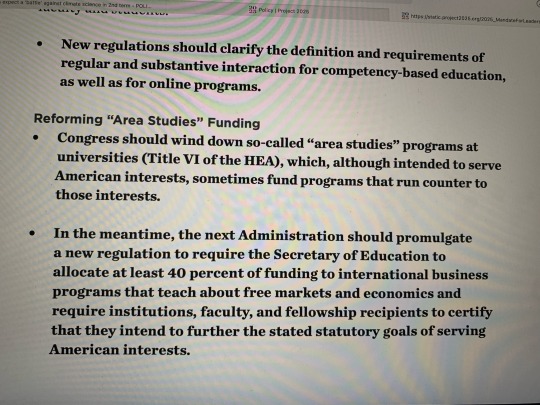
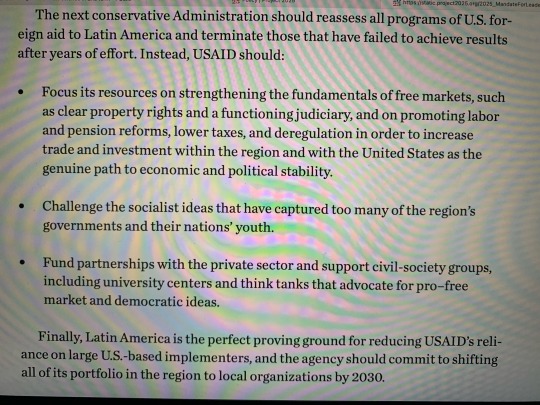
There's a line in here about getting rid of PBS because SESAME STREET is LEFTIST for God's sake.
HOW are people claiming democrats have the same policies. I feel like i'm losing my mind.
16K notes
·
View notes
Text
Environmental laboratory

ETLCO is a premier environmental consultancy firm renowned for its comprehensive services in securing environmental permits for operations and construction. Our company proudly operates an environmental laboratory accredited by both the National Center for Environmental Compliance (NCEC) (المركز الوطني للرقابة على الالتزام البيئي) and the Royal Commission (الهيئة الملكية). Equipped with the latest laboratory and sampling equipment, ETLCO meets the ever-demanding needs for analytical precision.
Our laboratory conducts tests under strict compliance with the latest approved standard methods and procedures (ISO 2017: 17025), ensuring accurate and reliable results. Our extensive range of services includes:
• Water Analyses
• Soil, Sludge, and Sediment Analyses
• Microbiological Tests
• Metals and Trace Metals Analyses
• VOC, SVOC, Pesticides, and TPH Analysis
With ETLCO, businesses receive unparalleled support in achieving full compliance with environmental regulations, backed by expert guidance and advanced laboratory services.
0 notes
Text
Pesticide Residue Testing Market: Rising Popularity of Organic Products Drives Growth

Rising popularity of organic products and high consumption rates of fruits & vegetables is expected to drive the Global Pesticide Residue Testing Market growth in the forecast period, 2025-2029
According to TechSci Research report, “Pesticide Residue Testing Market – Global Industry Size, Share, Trends, Competition Forecast & Opportunities, 2029”, the Global Pesticide Residue Testing Market stood at USD 1.21 Billion in 2023 and is anticipated to grow with a CAGR of 6.75% in the forecast period, 2025-2029. Several key drivers are propelling the growth of the global pesticide residue testing market. Foremost among these is the increasing global demand for organic foods, which necessitates rigorous pesticide residue testing to ensure compliance with organic certification standards.
In addition, regulatory bodies worldwide are tightening food safety standards and increasing their scrutiny of food products for pesticide residues, further driving the demand for testing. Technological advancements in testing methods and equipment are also making these tests more accurate and efficient, contributing to the market's growth. Rising consumer awareness about food safety and the potential health impacts of pesticide residues is prompting food producers and processors to invest more heavily in pesticide residue testing, to maintain consumer trust and brand reputation.
The global pesticide residue testing market is characterized as a dynamic and rapidly evolving industry. It is driven by increasing concerns regarding food safety, stringent regulations, and growing consumer awareness about the detrimental effects of pesticide residues. As a result, the market exhibits robust growth potential. Advancements in testing technologies and the implementation of rigorous food safety standards worldwide further amplify this expansion.
The market's growth is primarily propelled by the escalating need for food safety worldwide. With an increasing focus on health consciousness, fresh food and vegetables have observed a continuous rise in market share. According to the World Health Organization (WHO), access to sufficient quantities of safe and nourishing food is crucial for sustaining life and promoting good health. Contaminated food containing harmful bacteria, viruses, parasites, or chemical chemicals can lead to over 200 different diseases, ranging from diarrhea to malignancies. Unsafe food contributes to a vicious cycle of sickness and hunger, disproportionately affecting young children, the elderly, the sick, and infants. Consequently, the demand for the market has emerged. Additionally, government monitoring initiatives and increased pesticide and herbicide application further stimulate market growth.
Browse over XX market data Figures spread through XX Pages and an in-depth TOC on "Global Pesticide Residue Testing Market”
https://www.techsciresearch.com/report/pesticide-residue-testing-market/2638.html
Furthermore, the market's expansion is bolstered by favorable support provided by government and regulatory authorities to promote the testing of hazardous chemicals in food products. The European Food Safety Authority (EFSA) serves as the regulatory authority responsible for assessing consumer safety based on pesticide toxicity. The EFSA establishes legislation that encompasses pesticides currently or previously used in agriculture within or outside the European Union. On July 22, 2022, the EU revised its regulations pertaining to the highest acceptable levels of pesticide residues in certain foods. Regulation (EU)2022/1290 specifically addressed changes in the Maximum Residue Limit (MRL) for active substances such as nicotine, profenofos, chlormequat, dodine, and ametoctradine, as well as Spodoptera exigua multicapsid nucleopolyhedrovirus (SeMNPV) isolate BV-0004 in food. The market is anticipated to witness substantial growth in the coming years due to ongoing technological advancements.
For instance, in June 2022, researchers from Sweden's Karolinska Institute developed a sensor capable of rapidly identifying pesticides on fruit. Companies are utilizing new technologies such as sensors to ensure accurate pesticide testing. Inadequate food control infrastructure and resources in developing countries serve as the primary hindrances to market growth. However, challenges such as inadequate infrastructure in developing nations and the high cost of testing procedures pose obstacles to market development. Nevertheless, the market is expected to progress due to escalating investments in research and development and the rising export of food products from developing countries.
The Global Pesticide Residue Testing Market is segmented into type, technology, class, food tested, regional distribution, and company
Based on technology, High Performance Liquid Chromatography (HPLC) has emerged as the dominant technique in the Global Pesticide Residue Testing Market. With its exceptional capability to effectively separate, accurately identify, and precisely quantitate dissolved compounds, HPLC has become the highly preferred method for pesticide residue testing. The unparalleled precision and efficacy of HPLC, coupled with its versatile application range spanning across various industries, have contributed significantly to its unrivaled dominance in the market. Researchers and analysts alike rely on HPLC to obtain comprehensive and in-depth insights into pesticide residues, ensuring the safety and quality of agricultural products and environmental samples.
Based on region, North America is leading the Global Pesticide Residue Testing Market, primarily due to its strict adherence to stringent safety standards and regulations set by governments and health organizations. These standards demand comprehensive and thorough screening for pesticide residues in food products, ensuring utmost consumer safety. Moreover, the region's continuous advancements in testing technologies have greatly contributed to more precise and efficient testing procedures. With a well-established agricultural sector, North America has been able to leverage its infrastructure and expertise to implement robust testing protocols.
In addition, heightened consumer awareness about food safety in the region has played a pivotal role in market growth. As consumers become more conscious about the quality and safety of the products they consume, producers are driven to meet these expectations by ensuring high-quality, contaminant-free food offerings. The combination of stringent regulations, technological advancements, a well-established agricultural sector, and increasing consumer awareness has positioned North America at the forefront of the Global Pesticide Residue Testing Market, setting a benchmark for other regions to follow.
Major companies operating in Global Pesticide Residue Testing Market are:
Eurofins Scientific SE
Bureau Veritas S.A.
SGS S.A.
Mettler Toledo
Intertek Group PLC,
Silliker, Inc.
ALS Limited
Asurequality Ltd.
SCS Global Services
Microbac Laboratories Inc.
Download Free Sample Report
https://www.techsciresearch.com/sample-report.aspx?cid=2638
Customers can also request for 10% free customization on this report
“The future of the Global Pesticide Residue Testing Market appears promising, with expectations of significant growth. As consumers worldwide become progressively more conscious of food safety and the potential risks associated with pesticide residues, the demand for thorough and reliable testing is likely to surge. This increased demand is further compounded by the implementation of stringent regulations enacted by governments to ensure the safety and quality of food products.
Furthermore, advancements in technology and analytical methods will enable quicker and more efficient testing, allowing for a more comprehensive assessment of pesticide residues in various food commodities. These developments not only address the concerns of consumers but also assist regulators and industry stakeholders in making informed decisions and implementing appropriate risk management strategies. As a result, the Global Pesticide Residue Testing Market is expected to witness sustained growth and contribute significantly to ensuring the safety and integrity of the global food supply chain.,” said Mr. Karan Chechi, Research Director with TechSci Research, a research-based management consulting firm.
“Pesticide Residue Testing Market - Global Industry Size, Share, Trends, Opportunity, and Forecast, 2019-2029 Segmented By Type (Herbicides, Insecticides, Fungicides & Others), By Technology (Single Residue Method, Multiple Residue Method, LC-MS/GC-MS, High Performance Liquid Chromatography (HPLC), Gas Chromatography and Others), By Class (Organochlorines, Oganophosphates, Organonitrogens, Carbamates and Others), By Food Tested (Meat & Poultry, Dairy Products, Processed Food, Fruits & Vegetables, Cereals, Grains & Pulses and Others), By Region and Competition”, has evaluated the future growth potential of Global Pesticide Residue Testing Market and provides statistics & information on market size, structure and future market growth. The report intends to provide cutting-edge market intelligence and help decision makers take sound investment decisions. Besides, the report also identifies and analyzes the emerging trends along with essential drivers, challenges, and opportunities in Global Pesticide Residue Testing Market.
Browse Related Research
Blood Meal Market
https://www.techsciresearch.com/report/blood-meal/20963.html
Medicated Feed Additives Market
https://www.techsciresearch.com/report/medicated-feed-additives-market/20995.html
Feeding Systems Market
https://www.techsciresearch.com/report/feeding-systems-market/14661.html
Contact
TechSci Research LLC
420 Lexington Avenue, Suite 300,
New York, United States- 10170
Tel: +13322586602
Email: [email protected]
Website: www.techsciresearch.com
#Pesticide Residue Testing Market#Pesticide Residue Testing Market Size#Pesticide Residue Testing Market Share#Pesticide Residue Testing Market Trends#Pesticide Residue Testing Market Growth
0 notes
Text
0 notes
Text
Surprising New Research Links Infant Mortality to Crashing Bat Populations. (New York Times)
Excerpt from this New York Times story:
The connections are commonsense but the conclusion is shocking.
Bats eat insects. When a fatal disease hit bats, farmers used more pesticides to protect crops. And that, according to a new study, led to an increase in infant mortality.
According to the research, published Thursday in the journal Science, farmers in affected U.S. counties increased their use of insecticides by 31 percent when bat populations declined. In those places, infant mortality rose by an estimated 8 percent.
“It’s a seminal piece,” said Carmen Messerlian, a reproductive epidemiologist at Harvard who was not involved with the research. “I actually think it’s groundbreaking.”
The new study tested various alternatives to see if something else could have driven the increase: Unemployment or drug overdoses, for example. Nothing else was found to cause it.
Dr. Messerlian, who studies how the environment affects fertility, pregnancy and child health, said a growing body of research is showing health effects from toxic chemicals in our environment, even if scientists can’t put their fingers on the causal links.
“If we were to reduce the population-level exposure today, we would save lives,” she said. “It’s as easy as that.”
The new study is the latest to find dire consequences for humans when ecosystems are thrown out of balance. Recent research by the same author, Eyal Frank, an environmental economist at the University of Chicago, found that a die-off of vultures in India had led to half a million excess human deaths as rotting livestock carcasses polluted water and spurred an increase in feral dogs, spreading waterborne diseases and rabies.
“We often pay a lot of attention to global extinctions, where species completely disappear,” Dr. Frank said. “But we start experiencing loss and damages well before that.”
4K notes
·
View notes
Text

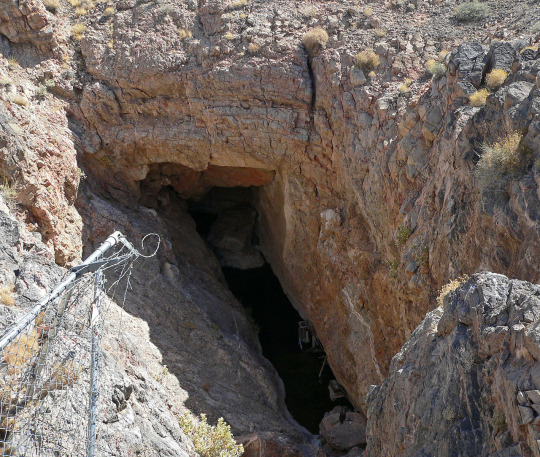
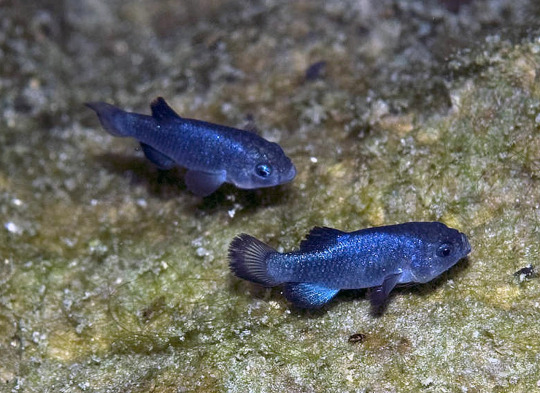



(reposting as I am unable to reblog the original.)
requested by @kodicraft
🔶 Rating: Partially Reliable 🔶
The Devils Hole is home to the endangered Devils Hole Pupfish.
From the National Park Service's page on Devils Hole: 'Devils Hole--a detached unit of Death Valley National Park--is habitat for the only naturally occurring population of the endangered Devils Hole Pupfish (Cyprinodon diabolis).'
The existence of the pupfish does prevent the pumping of groundwater in the area, after a legal battle. I am not sure this would apply to all mining.
From a High Country News article on the pupfish: 'The Cappaert case went all the way to the U.S. Supreme Court, testing the power of the Antiquities Act and the weight of the new Endangered Species Act. In 1976, the High Court affirmed the federal government’s right to maintain water levels sufficient to support the pupfish, even at the expense of water rights held by nearby ranchers.'
The habitat of this fish is incredibly small. However, it is slightly larger than suggested, as the fish swim at least 20m deep; the rock shelf referenced is the only place where the fish feed and spawn in the wild.
From the same National Park Service page: 'Although pupfish have been found as deep as 66 feet (20 m), the fish forage and spawn exclusively on a shallow rock shelf near the surface, feeding on the algae and diatoms found there.'
It is true that multiple conservation attempts have failed. Previous attempts to breed or crossbreed the fish have not been successful.
From a National Park Foundation article on the pupfish: 'Despite past efforts to create a similar artificial platform for the pupfish, as well as attempts to breed Devils Hole pupfish and hybrids in captivity, this small ledge remains the sole spawning and feeding shelf for the fish.'
I have not been able to find any references to 'assassination attempts'. One individual did threaten to pour pesticide into Devil's Hole, but it seems this was never attemped. If anyone can find anything on this, please let me know, but in the mean time I have to say this claim is unsubstantiated.
From a High Country News article on an incident of tresspassing and the pupfish: 'A Pahrump newspaper editor even threatened to throw the pesticide Rotenone into the sunken cave to “make the pupfish a moot point.”'
The fencing was initially installed after two people drowned, not after an assassination attempt. Later, more fencing and security was installed after three men drunkenly tresspassed and killed a pupfish.
From the same National Park Service page: 'Subsequently, the Hole was fenced after two divers drowned in its water.'
From a High Country News article on the incident of tresspassing : 'Since the incident, Devils Hole has become an even more formidable fortress. The Park Service capped its towering fences with additional barbed wire. The public can only view the sunken cave from a distance now, more than 20 feet above it. And inside the fenced viewing area are even more cameras, motion sensors and “No Trespassing” signs.'
There is a breeding program at Ash Meadows Facility, where scientists have attempted to mimic the natural habitat of the pupfish.
From a National Geographic article on the breeding attempts: 'And when they built the Ash Meadows facility, the scientists tried to create a mirror image of Devil’s Hole, which meant bringing in water, substrate, and algae from the natural environment.'
It is possible that a different research/breeding facility is being referred to, but the Ash Meadows Facility does not seem to have a secret location. In fact, the facility is open to visitors, according to their website.
I wont attempt to fact check whether the cave is haunted, but I can confirm that at least two people drowned and were not recovered from Devils Hole. Whilst the cave is not truly bottomless, the bottom has not yet been found.
From an SFGATE article on Devils Hole: 'When the bottom of Devils Hole is one day found, the skeletons of two brothers-in-law may finally be recovered, fathoms below the frolicking pupfish.'
The breeding program has been more successful in recent years. This may be due to the discovery that diving beetles were eating the eggs and larvae, and the beetle population in the artificial environment being controlled. (This fact was not included in the original post, but I thought it was cool.)
From a National Geographic article on the breeding attempts: 'As Feuerbacher watched the infrared footage, which can visualize objects in the dark, a tiny pupfish larva smaller than a peppercorn flitted into the camera’s frame. This was big news. When a population gets as low as that of the pupfish, every animal—wild or captive, larva or adult—is critical to the species’ survival.
“I was pretty excited to see there was reproduction going on in the tank, and I just watched it for a little bit,” says Feuerbacher, a fish biologist with the U.S. Fish and Wildlife Service. “Then I saw a beetle swim past.”
It began circling the fish, and closing in.
“Then it just dove in and basically tore the fish in half right while I was watching,” says Feuerbacher.
[...]
During the first beetle collection, facility manager Jennifer Gumm says they caught 500 beetles in three hours. And on the very next pupfish egg collection, which is done by leaving out pieces of carpet that the fish like to lay their eggs on, the team retrieved close to 40 pupfish eggs.
Before this, they had been lucky to find four or five pupfish eggs during a refuge collection. Usually, it was zero.'
3K notes
·
View notes
Text

Unveiling the Truth: Detection of Pesticides in Fruits and Vegetables
In pursuing a healthier lifestyle, the detection of pesticides in fruits and vegetables has become a significant issue. As we indulge in the natural flavors of these foods, it is crucial to identify and address any potential potential hazards. Pesticides in our food supply can harm our health, making raising awareness and implementing effective detection methods imperative.
This blog post delves deep into the intricate world of pesticide detection, exploring the methods, technologies, and implications for our well-being.
0 notes
Text
Animal Feed Testing Market - Forecast (2023 - 2028)
Animal Feed Testing involves the inspection and testing of animal feed. Animal feed testing is performed to understand the quality, nutritional value, contamination levels, formulation, and many other parameters. The market for animal feed testing has been broadly classified based on the type of feed and type of testing.
#animal feed testing market#animal feed testing market size#animal feed testing#pathogen testing#feed ingredient analysis#pesticides and fertilizers analysis#nutritional labeling#proximate analysis
0 notes
Text
Vietnam Pesticide Residue Testing Market Outlook, Trends, Forecast 2022-2029
BlueWeave Consulting, a leading strategic consulting and market research firm, in its recent study, expects Vietnam pesticide residue testing market size to grow at a CAGR of 5.25% during the forecast period between 2023 and 2029. Several important factors are driving significant growth in the pesticide residue industry in Vietnam. Reducing pesticide residues in food and crops is now more important than ever because of the rising demand for high-quality and secure agricultural products. This has led to the adoption of cutting-edge pesticide control techniques and technology by farmers and growers. The demand for products free of pesticide residues has also increased as customers become more aware of the potential health hazards connected with pesticide residues. Government policies and programs supporting safe food and sustainable agriculture have accelerated market expansion. A further factor boosting the demand for residue testing and mitigation strategies is the rising export market for Vietnamese agricultural products, which has given farmers considerable incentives to adhere to international residue regulations. Overall, these factors are promoting the market for pesticide residue in Vietnam.
Vietnam Pesticide Residue Testing Market – Overview
Pesticide residue testing is a process used to detect and measure the presence of pesticide residues in various agricultural products, such as fruits, vegetables, grains, and animal products. It is conducted to ensure the safety of food and the compliance of pesticide use with regulatory standards. The testing involves collecting samples from different sources and analyzing them using various techniques, including chromatography and mass spectrometry. By identifying and quantifying pesticide residues, this testing helps assess potential risks to human health and the environment. It plays a crucial role in monitoring and enforcing pesticide regulations, enabling consumers to make informed choices and promoting food safety worldwide.
Sample Request @ https://www.blueweaveconsulting.com/report/vietnam-pesticide-residue-testing-market/report-sample
Impact of COVID-19 on Vietnam Pesticide Residue Testing Market
The COVID-19 pandemic significantly impacted the Vietnam pesticide residue testing market, creating a wave of uncertainty and disruption. The market, which heavily relies on agriculture and exports, has been hit by supply chain disruptions, reduced demand, and logistical challenges. The lockdown measures and travel restrictions imposed to curb the spread of the virus have disrupted the production and distribution of pesticides, affecting the availability and affordability of these products. Also, the pandemic resulted in a decline in international trade, affecting export opportunities for Vietnam's pesticide residue products. As the industry continues to navigate the challenges posed by the pandemic, the future of the Vietnam pesticide residue testing market remains uncertain.
Vietnam Pesticide Residue Testing Market – By Technology
On the basis of technology, Vietnam pesticide residue testing market is divided into Single Residue Method, Multiple Residue Method, LC-MS/GC-MS, High-Performance Liquid Chromatography (HPLC), and Gas Chromatography segments. The multiple residue method is the largest segment. This method allows for the simultaneous detection and quantification of various pesticide residues in agricultural products. It offers efficiency and cost-effectiveness by combining multiple analyses into a single process. LC-MS/GC-MS, which stands for Liquid Chromatography-Mass Spectrometry/Gas Chromatography-Mass Spectrometry, is another significant segment. It provides highly sensitive and accurate results by combining the separation capabilities of chromatography with the detection capabilities of mass spectrometry. High-Performance Liquid Chromatography (HPLC) and Gas Chromatography are additional methods used for analyzing pesticide residues, albeit to a lesser extent in the Vietnamese market.
Competitive Landscape
Vietnam pesticide residue testing market is significantly competitive. Major companies in the market include Eurofins Scientific Se, Bureau Veritas S.A., SGS S.A., Intertek Group PLC, Silliker, Inc., ALS Limited, Asurequality Ltd., SCS Vietnam Services, Microbac Laboratories Inc, and Symbio Laboratories. These companies use various strategies, including increasing investments in their R&D activities, mergers, and acquisitions, joint ventures, collaborations, licensing agreements, and new product and service releases to further strengthen their position in Vietnam pesticide residue testing market.
Contact Us:
BlueWeave Consulting & Research Pvt. Ltd
+1 866 658 6826 | +1 425 320 4776 | +44 1865 60 0662
0 notes
Text
Neither the pirate ship nor the poison cartel is relevant to our future.
- Dr. Vandana Shiva on The Relationship Between Cosmetics & Nature
#q#quotes#vandana shiva#cosmetics industry#makeup#earth stewardship#animal testing#gmo#pesticides#mindful consumption#mindful living#holistic leveling up#leveling up#wellness journey#green juice girl#that girl#mindfulness#solarpunk#yoga#slow living#soft living#karma#wfpb#animal exploitation#sustainability#ecofeminism#eco conscious#late stage capitalism#plant based lifestyle#ethical consumption
0 notes
Text

On April 19th, 1987, a bird known as Adult Condor 9 was captured in the Bitter Creek National Wildlife Refuge, near Bakersfield, California. After decades ravaged by the threats of lead-poisoning and pesticide exposure, and intense debate over the ethics of captivity, it had been determined that captive breeding was the final hope to save a species. As his designation might suggest, AC-9 was the ninth condor to be captured for the new program; he was also the last.
As the biology team transported the seven-year-old male to the safety of the San Diego Wild Animal Park, his species, the California Condor, North America's largest bird, became extinct in its native range. It was Easter Sunday—a fitting day for the start of a resurrection.
At the time of AC-9's capture, the total world population of California condors constituted just twenty-seven birds. The majority of them represented ongoing conservation attempts: immature birds, taken from the wild as nestlings and eggs to be captive-reared in safety, with the intention of re-release into the wild. Now, efforts turned fully towards the hope of captive breeding.
Captive breeding is never a sure-fire bet, especially for sensitive, slow-reproducing species like the condor. Animals can and do go extinct even when all individuals are successfully shielded from peril and provided with ideal breeding conditions. Persistence in captivity is not the solution to habitat destruction and extirpation—but it can buy valuable time for a species that needs it.
Thankfully, for the California condor, it paid off.
The birds defied expectations, with an egg successfully hatched at the San Diego Zoo the very next year. Unlike many other birds of prey, which may produce clutches of up to 5 hatchlings, the California condor raises a single chick per breeding season, providing care for the first full year of its life, and, as a consequence, often not nesting at all in the year following the birth of a chick. This, combined with the bird's slow maturation (taking six to eight years to start breeding), presented a significant challenge. However, biologists were able to exploit another quirk of the bird's breeding cycle: its ability to double-clutch.
Raising a single offspring per year is a massive risk in a world full of threats, and the California condor's biology has provided it with a back-up plan: in years when a chick or egg has been lost, condors will often re-nest with a second egg. To take advantage of this tendency, eggs were selectively removed from birds in the captive breeding program, which would then lay a replacement, greatly increasing their reproduction rate.
And what of the eggs that were taken? The tendency of hatchlings to imprint is well-known, and the intention from the very beginning was for the birds to one day return to the wild—an impossibility for animals acclimated to humans. And so, puppets were made in the realistic likeness of adult condors, and used by members of the conservation team to feed and nurture the young birds, mitigating the risk of imprintation on the wrong species.
By 1992, the captive population had more than doubled, to 64 birds. That year, after an absence of five years, the first two captive-bred condors were released into their ancestral home. Many other releases followed, including the return of AC-9 himself in 2002. Thanks to the efforts of zoos and conservationists, as of 2024 there are 561 living California condors, over half of which fly free in the wilds of the American West.
The fight to save the California condor is far from over. The species is still listed as critically endangered. Lead poisoning (from ingesting shot/bullets from abandoned carcasses) remains the primary source of mortality for the species, with tagged birds tested and treated whenever possible. Baby condors are fed bone chips by their parents, likely as a calcium supplement—but, to a condor, bits of bone and bits of plastic can be indistinguishable, and dead nestlings have been found with stomachs full of trash.
There's hope, though. There are things we can change, things we can counteract and stop from happening in the future. It was a human hand that created this problem, and it will take a human hand to fix it. Hope is only gone when the last animal breathes its last breath—and the California condor is still here.
-
This painting is titled Puppet Rearing (California Condor), and is part of my series Conservation Pieces, which focuses on the efforts and techniques used to save critically endangered birds from extinction. It is traditional gouache, on 22x30" paper.

#california condor#bird art#bird extinction#endangered species#conservation#series: conservation pieces#extinction stories
1K notes
·
View notes
Text

Shelf-life testing is a crucial aspect of the food industry. It refers to determining the period during which a food product maintains its safety, quality, and freshness.
Exceeding the shelf life of a food product can pose a risk to consumer health and safety while discarding it before expiry can result in significant waste and financial loss. Hence, determining the shelf life of food is essential for ensuring food safety and minimizing waste.
This article discusses several methods used to determine the shelf life of food, including sensory evaluation, microbiological testing, chemical testing, and accelerated shelf life testing.
Visit Us https://smsla.global/methods-for-determining-the-shelf-life-of-food/
#Pesticide Residue Testing Laboratory in India#pesticide residue testing labs in india#pesticide residue analysis laboratory bangalore
0 notes
Text
Ways a Food Testing Laboratory can help Manufacturers & Consumers
In the food industry, regulatory compliance is a critical aspect of ensuring the safety and quality of food products. One essential tool used by food manufacturers and processors to meet regulatory compliance requirements: is the nutritional analysis testing through a Food Testing Laboratory.
Nutritional analysis testing provides critical information about the nutrient composition of food products, which is required by regulatory agencies such as the Food and Drug Administration (FDA).
The role of nutritional analysis testing in meeting regulatory compliance is multifaceted. The following are some of how nutritional analysis testing helps food manufacturers and processors meet regulatory compliance requirements:
Labeling compliance: Nutritional analysis testing is a requirement for food labeling compliance. The FDA and USDA require that all packaged foods be labeled with accurate and complete nutrition information.
Nutritional analysis testing provides this information, including calories, fat, protein, carbohydrate, and other essential nutrients. With accurate nutritional information, food products may be correctly labeled, leading to regulatory violations and consumer safety concerns.
Recipe development: Nutritional analysis testing is also essential for recipe development. Food manufacturers and processors need to know the nutrient content of their products to ensure that they meet regulatory requirements.
Nutritional analysis testing can help companies determine the nutrient content of their products, allowing them to adjust their recipes as needed to meet regulatory compliance requirements.
Quality control: Nutritional Analysis Testing Laboratory is a critical component of quality control in the food industry. Companies use nutritional analysis testing to ensure that their products are consistent regarding nutrient composition.
This consistency is essential for meeting regulatory compliance requirements and maintaining consumer trust and confidence in the product.
Product development: Nutritional analysis testing is also essential for product development. Companies can use nutritional analysis testing to create new products that meet regulatory requirements while meeting consumers' dietary needs and preferences.
Nutritional analysis testing can help companies identify nutrient gaps in their products, allowing them to develop healthier and more nutritious products.
Allergen management: Nutritional analysis testing can also help companies manage allergens in their products. Nutritional analysis testing can detect the presence of allergens in food products, which is critical for protecting consumers with food allergies.
By identifying allergens in their products, companies can take steps to avoid cross-contamination and ensure that their products are safe for all consumers.
In conclusion, by investing in nutritional analysis testing, food manufacturers and processors can ensure that their products are safe, healthy, and compliant with regulatory requirements.
Therefore, if you are looking for food or even a Pesticides Testing Laboratory, contact none other than Holistic International Testing Services!
0 notes
Text

Pesticides testing is a critical process ensuring the safety of agricultural products and environmental health. Through rigorous analytical methods such as chromatography and immunoassays, pesticide residues are detected and quantified. Testing assesses toxicity levels, environmental impact, and adherence to regulatory standards like Maximum Residue Limits (MRLs).
0 notes